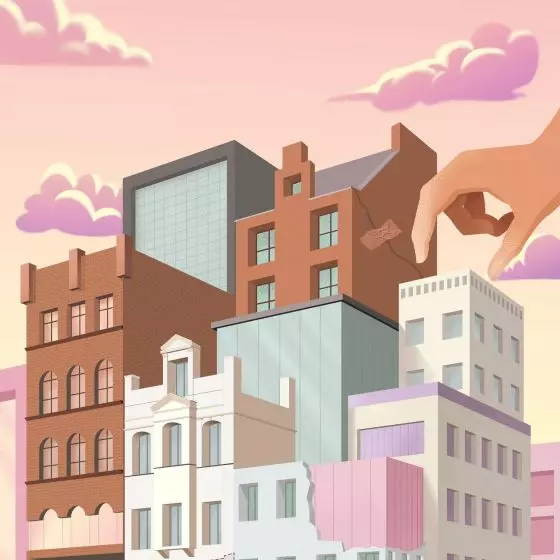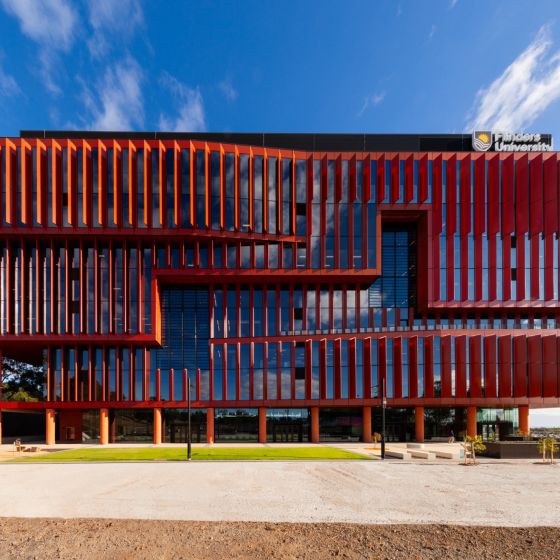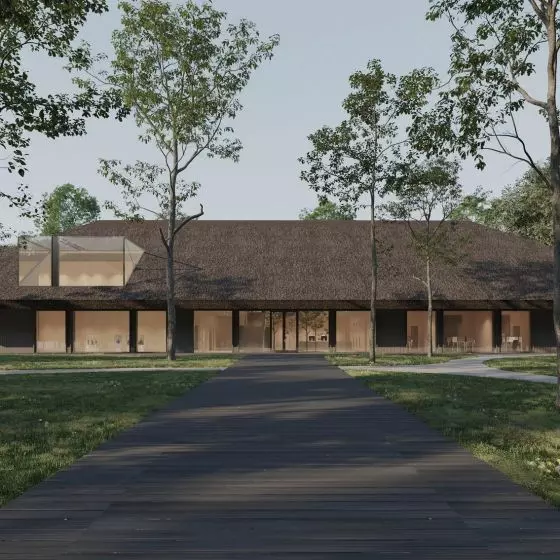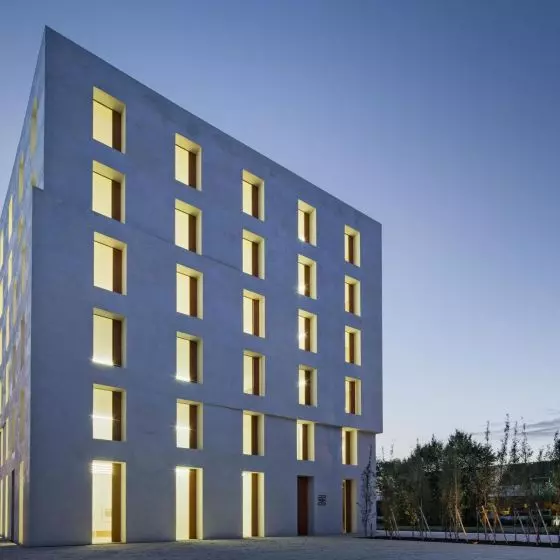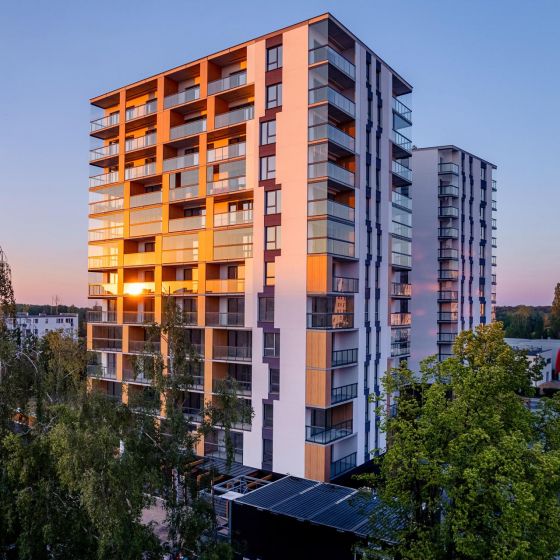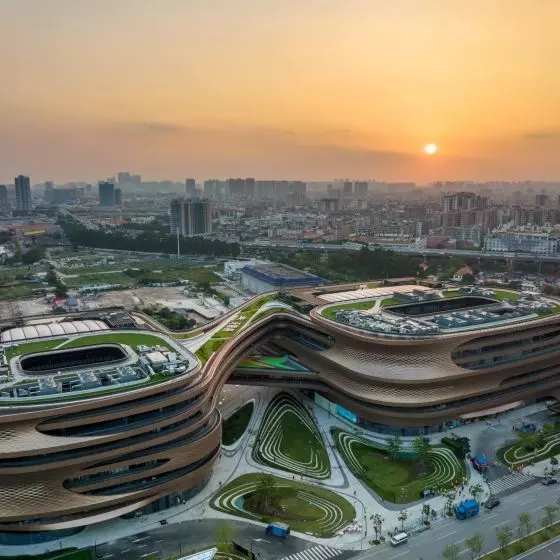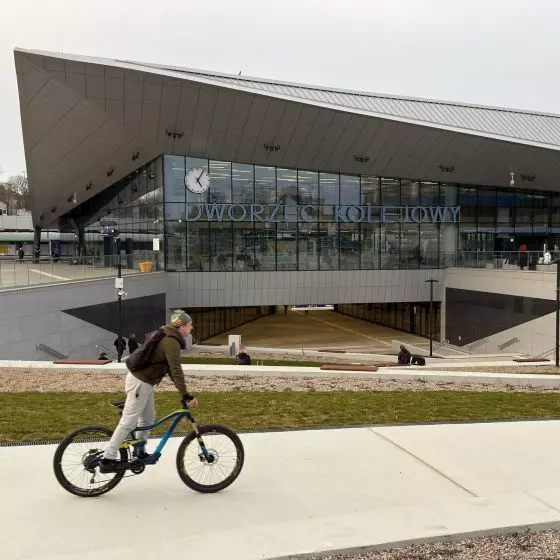Today I have something really special for you, unique in a rather shocking way. I created something beautiful, which at the same time... inflicts pain. I knew what I was signing up for when I sat down to do this work, but still this pain turned out to be greater than I expected. Something in me has forever changed the way I view this flimsy world that we try to create, stick and save, and in hindsight half of that effort turns out to be so inept that it shames us, and the other half just turns out to be destruction.
What's wrong with downtown Gdansk?
But maybe let's start at the beginning after all. I know that there are various people reading this right now who know Gdansk to varying degrees. Some know the city very well, others may just have been there once, and probably still others know it only from photos. I got to know the city all too well. Because I am involved in urban planning and passionate about the history of my city, my perception of its space is quite different from the ordinary observer. I don't know - this is an open question to everyone - is it only me who, through my professional bent, has always had such a strange impression, or is it, however, a common feeling that there is something wrong with downtown Gdansk?
Something more wrong than in other cities. I mean, I've always known the reason for this feeling, but I don't know to what extent it is commonly thrown in people's faces that this city doesn't have a Downtown, but so totally lacking. So much so that its role since the end of the war, as a substitute and for lack of any other choice , is held by a completely different district - Wrzeszcz - located a few kilometers northwest of the place that appears on the map as the Downtown of Gdansk.
I think this makes it all the more difficult for an outsider to grasp that something is wrong with Gdansk. There is a myth in the popular mindset that Danzig has, after all, been superbly rebuilt. Maybe in a slightly less thorough style than Warsaw's Old Town, but still. And indeed, today the center of Gdansk is wildly popular, you can admire a huge number of restored monuments there, but still, it is in vain to look in the downtown area for such a center as Szczecin, Wroclaw or Poznan has, not to mention cities like Lodz or Krakow with their huge downtowns. In Gdansk, however, such a city has always been scarce, there is no fooling ourselves.
For more than a century of partition, Gdansk was marginalized, relegating itself to the role of an insignificant German pipida. But since the beginning of the 20th century, it has tried to make up for the lost years in short order, benefiting from the rapid development of the shipbuilding industry. Remnants of that heyday can still be seen in Gdansk, such as the magnificent train station, or the extremely refined tenement building that now houses the NBP.
However, while in other cities such buildings are immersed in the dense, urban, vibrant urban fabric, this unfortunately cannot be said of Gdansk. Scattered architectural vestiges of some kind of downtown, other than just the old and main city, strangely crouch on the western edge of downtown. Looking at them, it's actually hard to guess what they formed of themselves, what kind of city they were. People shuffle past them mostly out of necessity, to get away from this busy and unfriendly street as quickly as possible.
a journey to the past
A better idea of how the city functioned in its downtown is undoubtedly available to the many Gdansk history buffs, who for years have been exchanging photos found in archives of buildings that no longer exist. Every now and then, one can come across archival photographs on various forums or Facebook pages depicting various amazing and beautiful buildings that stood somewhere... you have to look at a map... oh, and this is where it was... well, there you go. Other times we discover that another building stood somewhere else. You can flip through these photos like this for a hundred years, and still what the city looked like in its entirety you will never grasp.
I stared at these photos like this for years and thought I understood something, and - as I was soon to find out- I understoodnothing . I don't think there are even any living people left who remember how it all used to work. What the spaces looked like. However, we see how Gdansk functions in these places today, we know the buildings and roads that appeared after the war, and I have a conviction that this state does not satisfy the residents of my city. That is why the authorities are trying to make attempts to fix this space. However, in order to know what we want to achieve and what else to fix, it is necessary to know how the city functioned in the past, and what the tradition of the place can tell us about the possible future.
To this end, the City of Gdansk commissioned me to do some rather unusual work, which I intend to share with you today:
Creating a model of the pre-war Dow ntown Danzig
in thearea of the Western Front of the Downtown.
This was the most representative and metropolitan part of Gdansk before the war, but for political and economic reasons, it was never rebuilt. This is painful because it didn't suffer as much from warfare as the densely built-up Main City, where a raging firestorm moving between wall-to-wall packed old tenements wreaked far more havoc, and yet it managed to raise that part of the city from the rubble. And that's a very good thing. However, let's look at what has not been rebuilt already.
a model of pre-war Gdansk
I now invite you on this journey through time and space to Gdansk just before the outbreak of war. Perhaps some of you have already had a chance to see my material a few days ago in the local media, so taking into account some comments, I decided to prepare a new, longer version of the film, allowing you to get a better idea of the city's space today, since most of the places you will see are almost unrecognizable today.
As you will probably admit, this view is quite painful. However, you can't help thinking that World War II took from us not only millions of lives and priceless material heritage, but also something more. The ability to rationally create good spaces for our cities. As a result of this trauma, something has deeply broken in us. You can see this, especially when you juxtapose these places with today's space.
Pre-war visualization and current state of space in downtown Gdansk - Podwale Grodzkie view from before the train station
© Paweł Mrozek
Pre-war visualization and current state of space in Downtown Gdansk - Hucisko area; the best preserved part of the Western Front of Downtown
© Pawel Mrozek
Pre-war visualization and current state of space in Downtown Gdansk - Waly Jagiellońskie Street, view towards Hucisko
© Pawel Mrozek
Pre-war visualization and current state of space in Downtown Gdansk - the now defunct Hanse Square with transformed remnants of buildings
© Paweł Mrozek
However, this time I don't want to go too deeply into the issues of why this happened, although I have my opinion on the subject. Nor to write what we should do about it today, for this is a task for a completely different, very extensive text, and it is also, above all, a challenge facing the city authorities. For now, I would like to leave you all with what we have seen, so that everyone can ask themselves these questions. However, in no way should we run away from them, because our cities do not get better from it.























